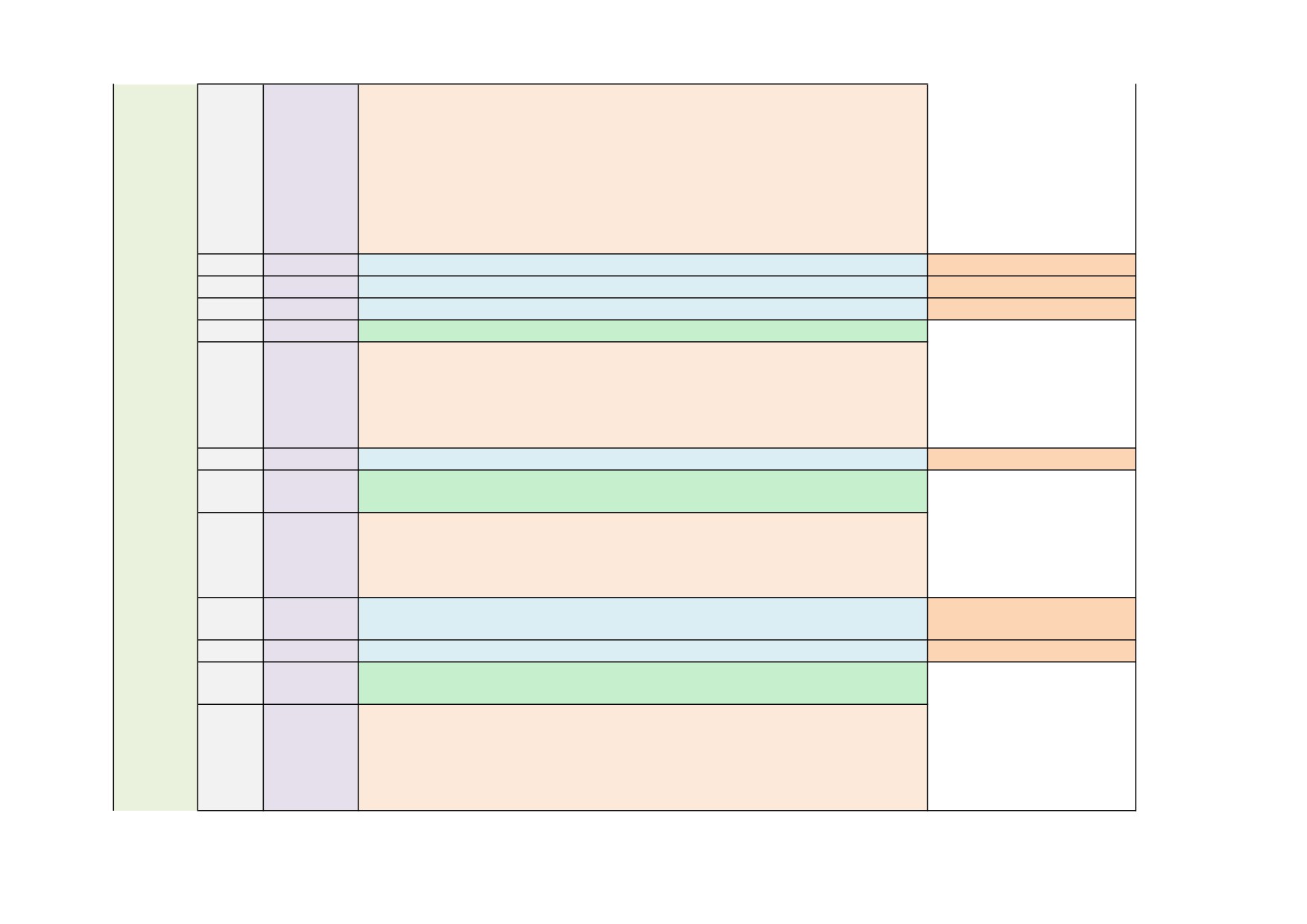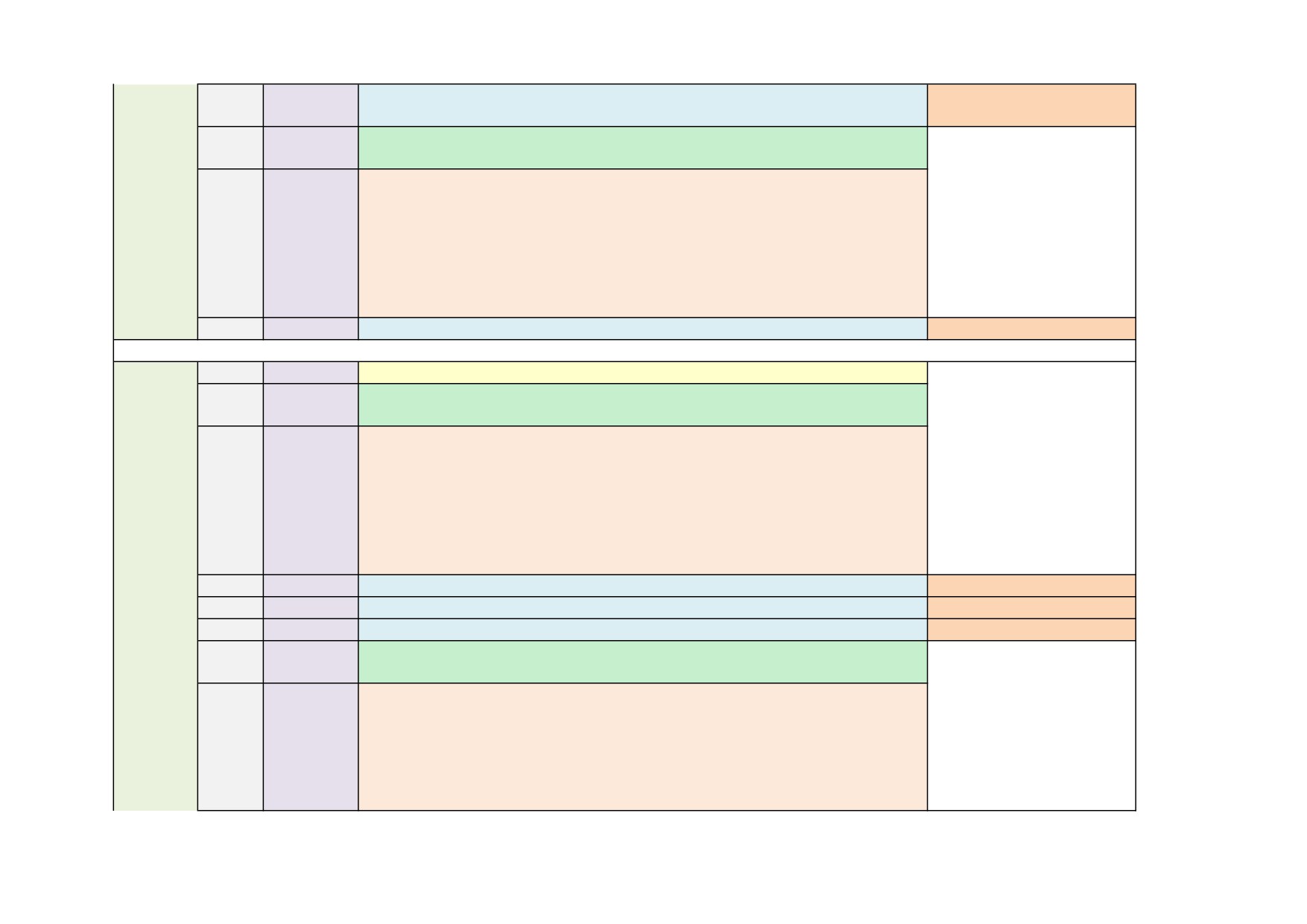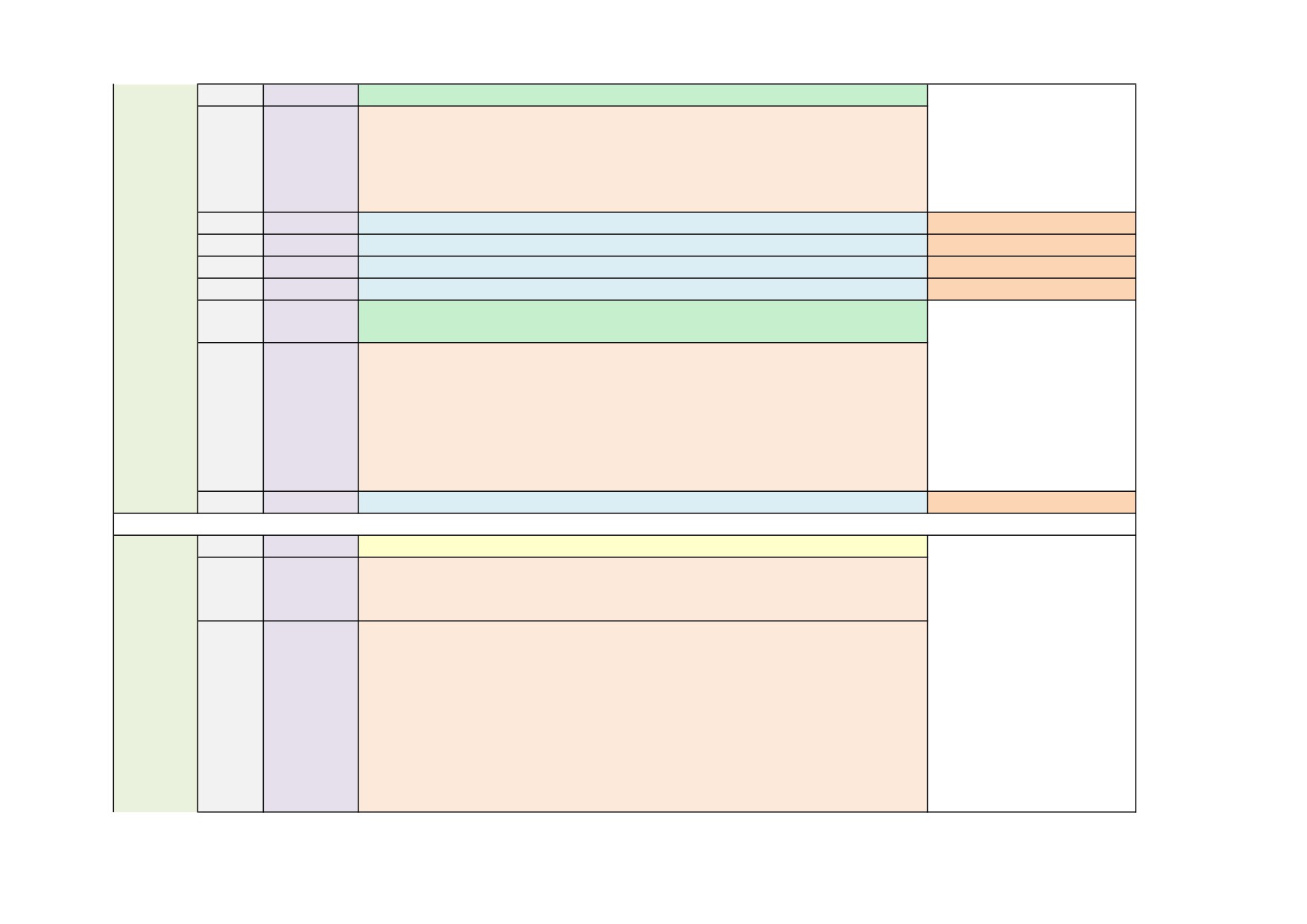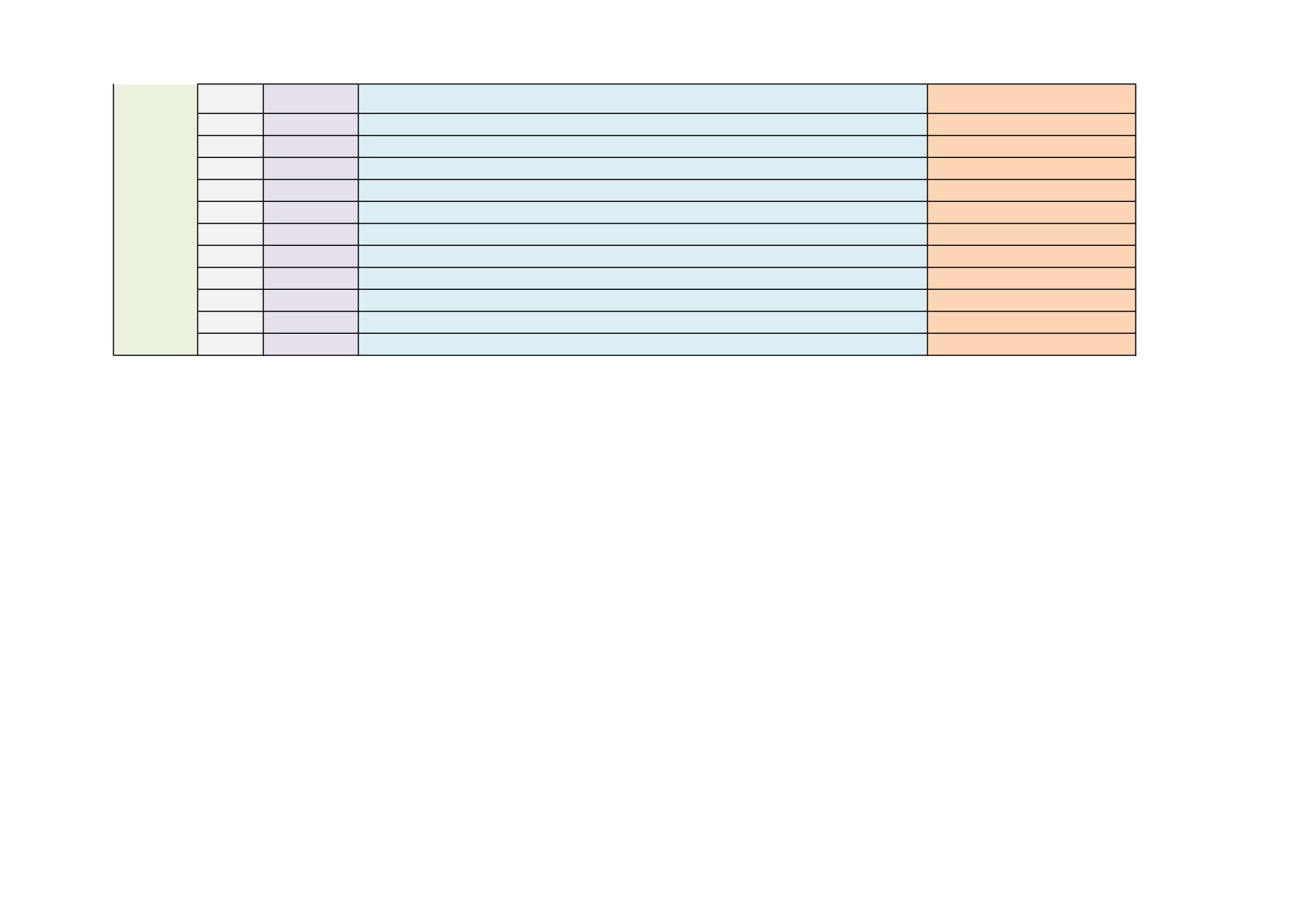CBME Curriculum AMCH
Depatment of Community Medicine Phase II MBBS Lesson Plan
Topic No.
Lec.No.
Comp. No.
Titles: Topic, Competency with SLO & Lesson
Teaching Methodology
2
Topic
Relationship of social and behavioural to health and disease
CM2.4
Describe social psychology, community behaviour and community relationship and
their impact on health and disease
CM2.4/SLO
1. Describe social psychology, community behaviour and community relationship
2. Describe the impact of social psychology, community behaviour and community
relationship health and disease
Social psychology, community behaviour and community relationship and their
53
impact on health and disease
Lecture
54
Concept in sociology, Types of learning, IQ coefficient
Tutorial
55
Cultural factors in health and disease, Social problem
Self Directed Learning
56
Consumer protection act, Art of interviewing
Seminar
Poverty and social security measures and its relationship to health and disease
57
Lecture
3
Topic
Environmental Health Problems
CM3.1
Describe the health hazards of air, water, noise, radiation and pollution
CM3.1/SLO
1. Describe the sources and various health hazards air, water, soil polltion, noise and
radiation
2. Explain in detail the prevention and control of Environmental pollution
3. Discuss briefly the various pollution related indices and their importance to public
health
58
Health hazards of air, water, noise, radiation and pollution
Seminar
59
Effect of Air pollution and Preventive measures.
Self Directed Learning
60
Ventilation, effect of heat stress and effect of cold stress
Seminar
CM3.2
Describe concepts of safe and wholesome water, sanitary sources of water, water
purification processes, water quality standards, concepts of water conservation and
rainwater harvesting
CM3.2/SLO
1. Define safe and Wholesome water
2. Enumerate the various sources of water
3. Explain the methods of Water purification at large scale and at small scale level
4. Describe briefly on water quality standards.
5. Illustrate various methods of Water conservation and rainwater harvesting
Concepts of safe and wholesome water, sanitary sources of water, water purification
61
processes,
Lecture
62
Sanitary well, break point chlorination
Tutorial
Water quality and standards, concepts of water conservation and rainwater
63
harvesting
Self Directed Learning
CM3.3
Describe the aetiology and basis of water borne diseases/jaundice/hepatitis/
diarrheal diseases
CM3.3/SLO
1.Describe the aetiology of various water borne diseases
2. Discuss the epidemiology and preventive measures of water borne diseases /
jaundice /hepatitis/diarrheal diseases
3. Explain various treatment and preventive measures to combat these diseases
64
Water borne diseases- Diarrheal diseases
Tutorial
CM3.4
Describe the concept of solid waste, human excreta and sewage disposal
CM3.4/SLO
1.Enlist the types of solid waste and its impact on environment
2.Describe in detail various methods of solid waste disposal in Urban, rural, slum
areas
3.Classify methods of excreta disposal and discuss about sanitation barrier.
4.Describe in detail various methods of excreta disposal
5. Discuss briefly the methods of disposal of waste water.
65
Solid waste, Method of disposal of solid waste
Self Directed Learning
66
Method of excreta disposal
Tutorial
67
Modern sewage treatment
Lecture
CM3.5
Describe the standards of housing and the effect of housing on health
CM3.5/SLO
1.Describe the factors determining environmental health related to housing
2. Discuss housing standards
3. Discuss the effects of abnormalities in housing on health
68
Housing Standards
Lecture
CM3.6
Describe the role of vectors in the causation of diseases. Also discuss National
Vector Borne disease Control Program
CM3.6/SLO
1.Describe the role of various vectors in the causation of diseases
2. Discuss on various aspects of National Vector Borne Disease Control Program
Role of vectors in the causation of diseases. National Vector Borne disease Control
69
Program
Seminar
70
Principles of Arthropod control - Mosquito control measures
Lecture
CM3.7
Identify and describe the identifying features and life cycles of vectors of Public
Health importance and their control measures
CM3.7/SLO
1.1. Identify various vectors of public health importance
2. Describe their identifying features and salient features of their life cycles
3. Discuss various control measures available for specific vectors
Identifying features and life cycles of vectors of Public Health importance and their
71
control measures
Tutorial
CM3.8
Describe the mode of action, application cycle of commonly used insecticides and
rodenticides
CM3.8/SLO
1.List various insecticides and rodenticides with respect to insects and rodents of
public health importance
2. Describe the mode of action of various insecticides and rodenticides
3. Explain the methods of application of these rodenticides and insecticides safely to
prevent zoonotic diseases and agricultural as well as domestic loss
72
Insecticides and rodenticides
Self Directed Learning
4
Topic
Principles of health promotion and education
CM4.1
Describe various methods of health education with their advantages and limitations
CM4.1/SL0
1. Define health education
2. Describe the various methods of health education
3. Describe the advantages and limitations of each health education method
4. Identify the appropriate health education method for individual, group and mass
approach
73
Type and functions of health education, barriers of communication
Tutorial
74
Various approaches of health education, Contents of health education
Self Directed Learning
75
Principles of Health education
Seminar
CM4.2
Describe the methods of organizing health promotion and education and counselling
activities at individual family and community settings
CM4.2/SL0
1. List the methods in health communication
2. Describe the methods of organizing health promotion and education and
counseling activities at Individual, family and community settings
3. Plan a health education session at Individual, family and community settings by
selecting appropriate methods
Methods of organizing health promotion and education and counseling activities at
76
individual family and community settings
Lecture
5
Topic
Nutrition
CM5.1
Describe the common sources of various nutrients and special nutritional
requirements according to age, sex, activity, physiological conditions
CM5.1/SLO
1. Define nutrition
2. Describe the common sources of various nutrients
3. Describe the special nutritional requirements according to age, sex, activity and
physiological conditions
4. Calculate the calorie requirement of an individual based on age, gender and
occupation
Common sources of various nutrients and special nutritional requirements
77
Seminar
78
Nutritional Factors in selected diseases (CVD, DM, Obisity, Cancer)
Lecture
79
Assessment of Nutritional status
Seminar
80
Ecology of Malnutrition
Self Directed Learning
CM5.5
Describe the methods of nutritional surveillance, principles of nutritional education
and rehabilitation in the context of socio- cultural factors.
CM5.5/SLO
1. Define nutritional surveillance
2. List the indicators used in nutritional surveillance
3. Describe the methods of nutritional surveillance
4. Describe the principles of nutritional education
5. Describe nutritional rehabilitation in the context of sociocultural factors
Nutritional surveillance, principles of nutritional education and rehabilitation
Seminar
CM5.6
Enumerate and discuss the National Nutrition Policy, important national nutritional
Programs including the Integrated Child Development Services Scheme (ICDS) etc
CM5.6/SLO
1. Enumerate the important nutritional programs in India
2. Summarize the key features of important nutritional programs
3. Discuss about Integrated Child Development Service Scheme (ICDS), Vit A
prophylaxis programme, control of iodine deficiency disorders, mid-day meal
program
4. Discuss national nutritional policy
81
National Nutrition Policy and Community Nutrition Progrmmes.
Lecture
6
Topic
Basic statistics and its applications
CM6.1
Formulate a research question for a study
CM6.1/SLO
1. Define research
2. List the purpose of doing a research
3. Distinguish between research question, objectives and hypothesis
4. Formulate a research question for a given study
82
Formulate a research question for a study
Tutorial
CM6.3
Describe, discuss and demonstrate the application of elementary statistical methods
including test of significance in various study designs
CM6.3/SLO
1. Describe test of significance
2. List various tests of significance
3. Choose the appropriate test of significance for the given variable
4. Perform the test of significance and interpret the result
83
Application of elementary statistical methods.
Lecture
7
Topic
Epidemiology
CM7.1
Define Epidemiology and describe and enumerate the principles, concepts and uses
CM7.1/SLO
1.Define epidemiology
2.Describe the objectives of epidemiology
3.Describe the principles and usage of epidemiology
4.Know the scopes of epidemiology
84
Epidemiology principles, concepts and uses
Tutorial
Measurement of Mortality - International Death Certificate, Mortality Rate and
85
Ratio
Lecture
86
Measurement of Morbidity - Incidence, Prevalence
Tutorial
CM7.2
Enumerate, describe and discuss the modes of transmission and measures for
prevention and control of communicable and non- communicable diseases
CM7.2/SLO
1. Define various terms used in infectious diseases epidemiology
2. Describe the dynamics of disease transmission
3. List and explain various modes of disease transmission
4. Describe and discuss with example various methods of disease
prevention and control
5. Enlist the National programmes associated with each disease condition
87
Dynamics of disease transmission
Self Directed Learning
88
Infectious Disease Epidemiology
Tutorial
89
Host defense
Self Directed Learning
90
Immunoglobilin, Heard immunity
Seminar
91
Surveillances, Health advise to travelers
Self Directed Learning
92
Disinfection - Type, method
Seminar
CM7.3
Enumerate, describe and discuss the sources of epidemiological data
CM7.3/SLO
1.Enumerate the various sources of epidemiological data
2.Discuss the disease notification and registration processes
3.Describe the strengths and limitations of these data
93
Sources of epidemiological data
Lecture
94
Concept of screening, type, uses of screening
Tutorial
95
Criteria for screening and validity
Lecture
CM7.5
Enumerate, define, describe and discuss epidemiological study designs
CM7.5/SLO
1.Classify the types of epidemiological study designs
2.Discuss the steps involved in each study design
3.Compare the merits and demerits of each of the study design
4.Calculate and interpret the measures of strength of association
96
Epidemiological study designs - Descriptive Epidemiology
Tutorial
97
Analytical Epidemiology -Case Control study
Lecture
98
Analytical Epidemiology - Cohort Study
Tutorial
99
Experimental Epidemiology
Seminar
CM7.8
Describe the principles of association, causation and biases in epidemiological
studies
CM7.8/SLO
1.Distinguish association and causation
2.Explain Bias in epidemiology
3.Explain the types of association with relavent examples
4.Explain association based on a case example
5. Discuss Hill`s criteria in judging causality
100
Association and Causation
Seminar
8
Topic
Epidemiology of communicable and non- communicable diseases
CM8.1
Describe and discuss the epidemiological and control measures including the use of
essential laboratory tests at the primary care level for communicable diseases
CM8.1/SLO
1. Describe the epidemiological determinants for common communicable diseases
2. Describe the Clinical Features of Common Infectious diseases
3. Enumerate and coreleate the clinical findings and laboratory investigations at the
primary health level for common communicable diseases.
4 Describe the control measures of communicable diseases at the primary care
level
101
Epidemiology and prevention of Smallpox, Chicken pox and Measles
Lecture
102
Epidemiology and prevention of Rubella, Mumps
Seminar
103
Epidemiology and prevention of Influenza
Lecture
104
Epidemiology and prevention of Diphtheria, Whooping cough
IL : Vertical - Medicine
105
Epidemiology and prevention of Meningococcal meningitis, SARS
Lecture
106
Epidemiology and prevention of Acute Respiratory Infections
IL : Vertical - Paediatrics
107
Epidemiology and prevention of Tuberculosis
Lecture
108
Epidemiology and prevention of Polio myelitis
Seminar
109
Epidemiology and prevention of Viral Hepatitis
Lecture
110
Epidemiology and prevention of Acute Diarrhoeal Diseases
IL : Vertical - Paediatrics
111
Epidemiology and prevention of Cholera
Lecture
112
Epidemiology and prevention of Typhoid fever, Food poisoning
Seminar








